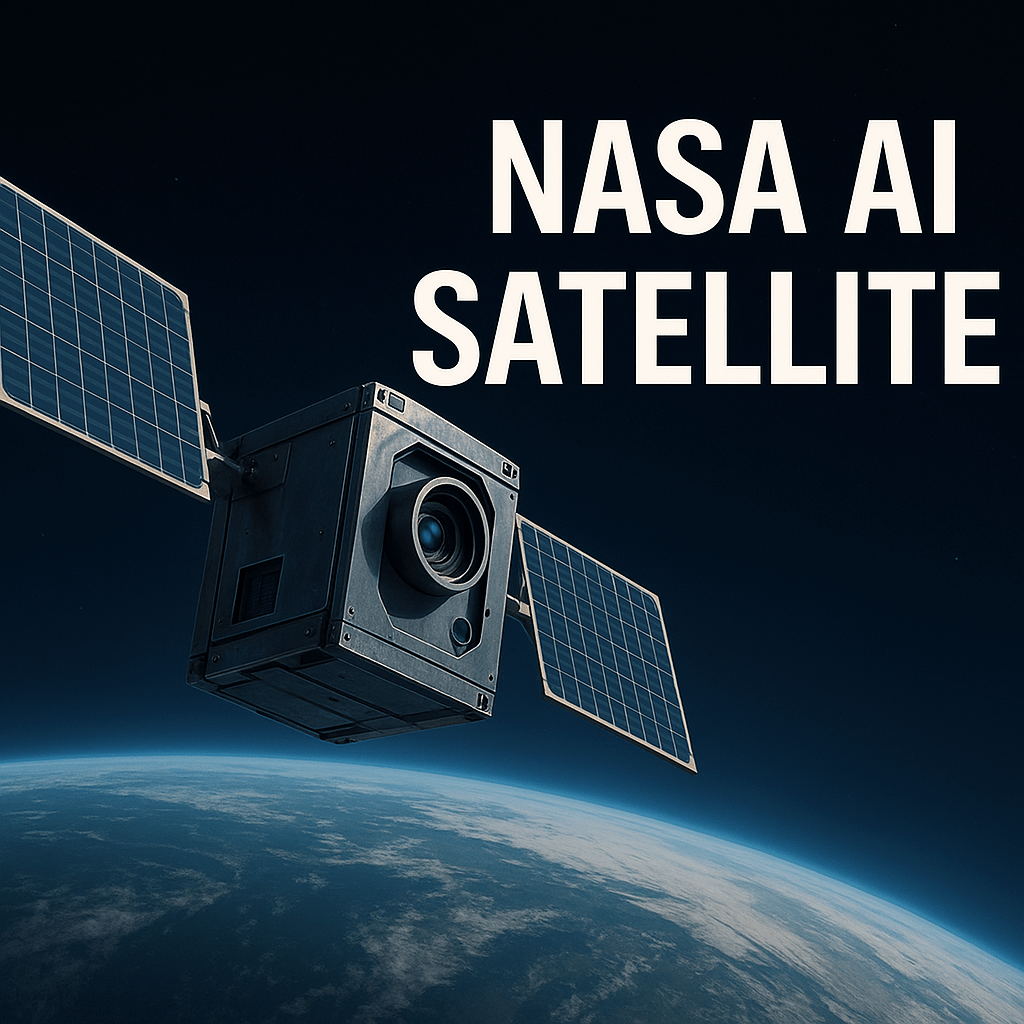CogniSAT‑6, part of the NASA CubeSat project, is roughly the size of a briefcase but holds immense technological potential. During recent tests, the NASA AI Satellite demonstrated NASA’s Dynamic Targeting system, which enabled it to complete a full decision-making cycle in under 90 seconds.
While orbiting Earth at nearly 17,000 mph, the satellite assessed its surroundings, scanned the terrain below, evaluated image conditions (like cloud cover), and made split-second decisions on whether or not to capture high-resolution images all without ground control input.
This dynamic process embodies the essence of satellite decision-making AI, allowing spacecraft to operate efficiently and intelligently in environments where time and clarity are critical.
Smarter Data, Better Missions

Traditionally, Earth observation satellites operate on fixed imaging schedules or commands from mission control. This often results in capturing redundant or unusable data, especially when cloud cover obscures the view.
NASA’s AI satellite takes a different approach. It mimics human judgment by analyzing the terrain ahead in real time and determining if the conditions are suitable for scientific observation. If not, it conserves resources by skipping the shot saving storage space, transmission power, and time.
By reducing unnecessary data collection and focusing on high-value observations, the satellite enables smart Earth observation that is faster, leaner, and far more efficient than ever before.
Real-Time Response to Dynamic Earth Events
Beyond its technical brilliance, this innovation holds transformative potential for real-world applications. The AI onboard CogniSAT‑6 can be trained to recognize critical events such as wildfires, volcanic eruptions, flash floods, or storm systems as they unfold.
In future missions, NASA aims to fine-tune the AI to recognize these transient phenomena and automatically shift the satellite’s focus capturing data at the exact moment it’s most valuable. This capability allows for AI-powered remote sensing that is not only intelligent but responsive.
As climate change intensifies and natural disasters become more frequent, having satellites that can adapt and act in real time may become essential to global emergency response, environmental monitoring, and resource management.
From Earth to Deep Space: The Road Ahead
The success of CogniSAT‑6 is not an isolated event. It’s part of a much larger vision within NASA one that includes future spacecraft swarms operating independently, collaboratively, and far from Earth.
Through initiatives like the Distributed Spacecraft Autonomy (DSA) program, NASA is exploring how multiple AI-equipped satellites can coordinate without any human oversight. These swarms could be deployed on the Moon, Mars, or deep space missions, handling scientific analysis, navigation, and mission decisions entirely on their own.
In such scenarios, where communication delays make real-time human input impossible, autonomous satellite technology becomes not just beneficial but absolutely essential.
A Game-Changer for AI in Space Exploration
The development of the NASA AI satellite marks a paradigm shift in how space missions are designed and executed. For decades, satellites have been passive observers, limited by Earth-bound instructions and rigid timelines. Today, they are evolving into autonomous agents, capable of understanding their environment and acting in real time.
As AI continues to transform industries on Earth, its integration into space systems opens doors to possibilities we are only beginning to imagine. From tracking environmental change to supporting interplanetary missions, AI’s role in space is expanding and NASA is leading the charge.
The Dawn of Intelligent Spacecraft
The successful test of CogniSAT‑6 is more than a technical milestone it’s a glimpse into the future of exploration. It demonstrates that machines can now think, learn, and make mission-critical decisions beyond the confines of Earth, ushering in a new chapter in both artificial intelligence and space science.
NASA AI satellite is not just orbiting the planet; it’s redefining the very nature of exploration, making it faster, smarter, and more autonomous than ever before.
